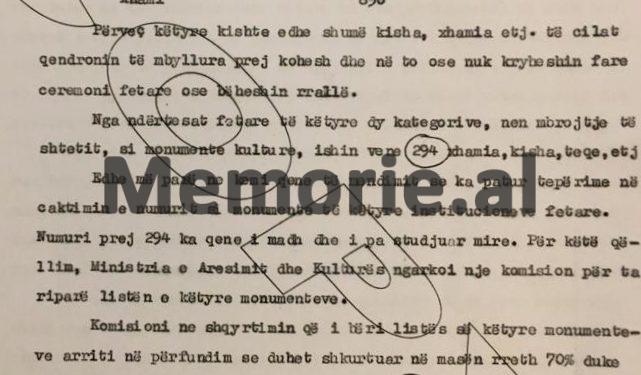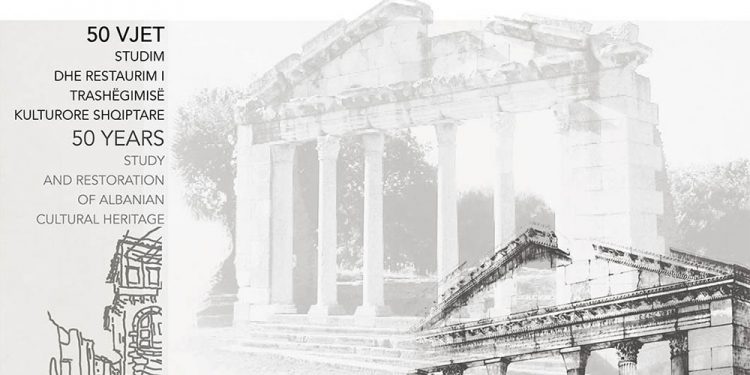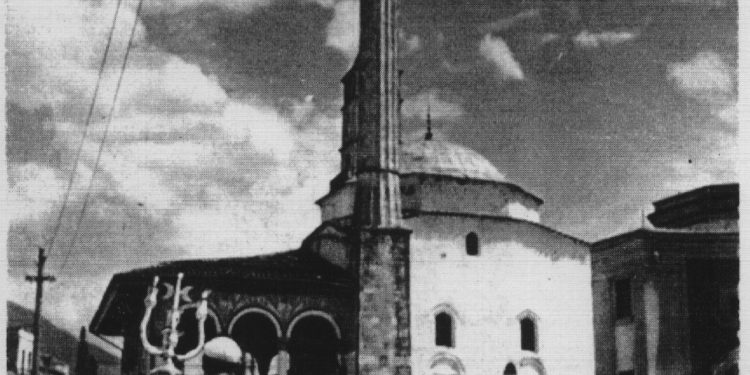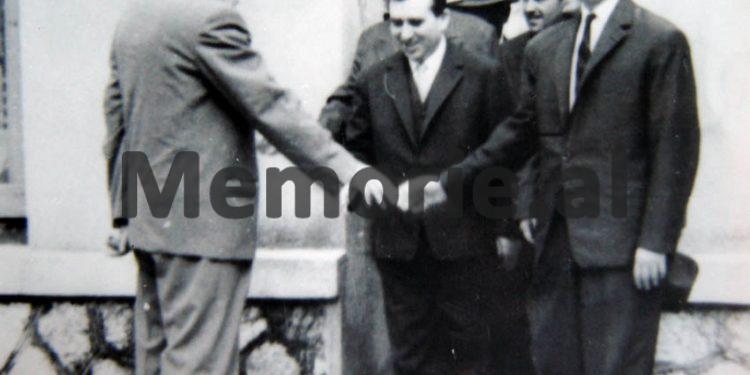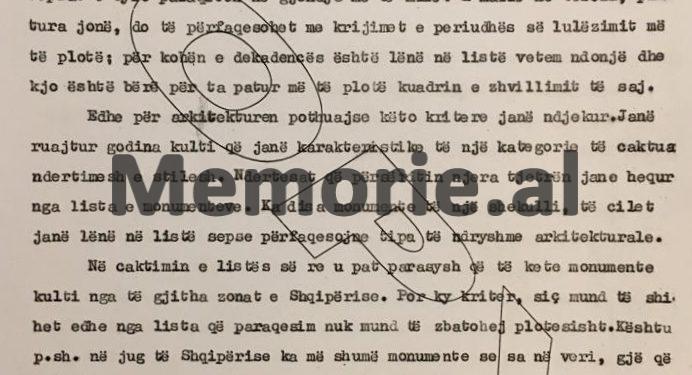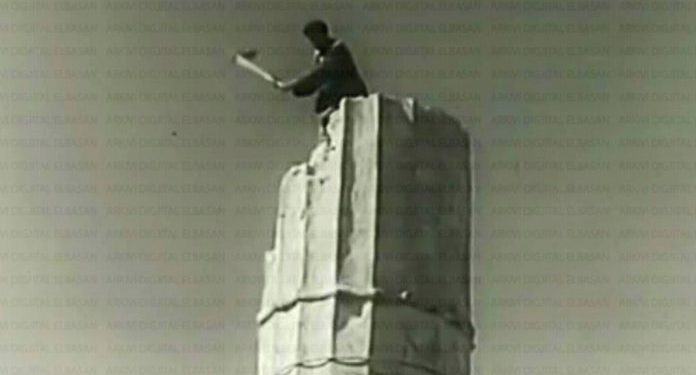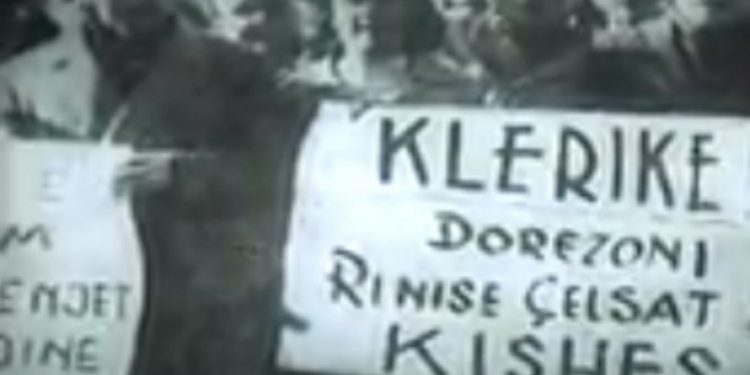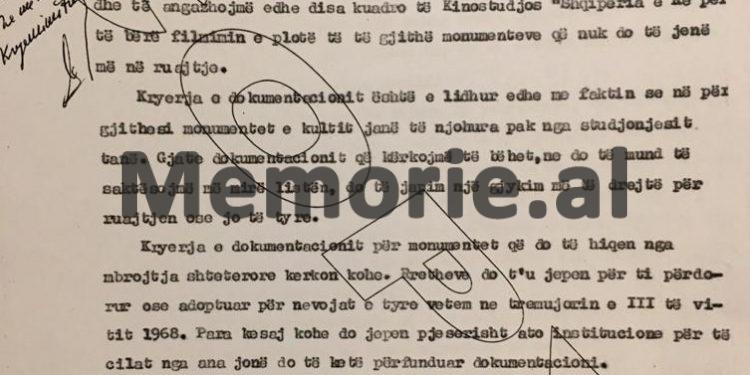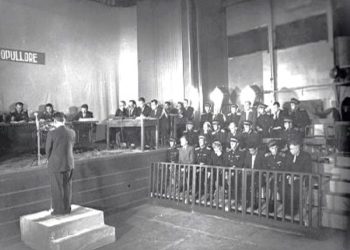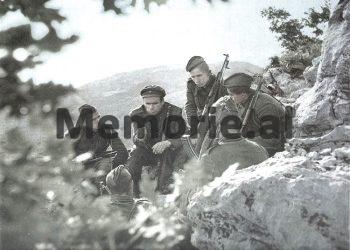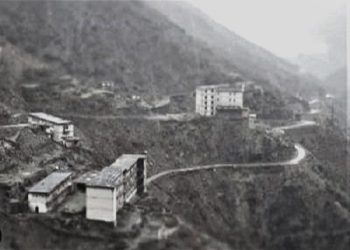Dashnor Kaloçi
Memorie.al publishes an previously unknown archival document that was extracted from the fund of the former Central Committee of the ALP, which belongs to 1967 and talks about a correspondence of the then Minister of Education and Culture, Thoma Deljana , with Ramiz Alia, the secretary of the Central Committee of the ALP, (for the propaganda and art and culture sector), regarding the number of different cult objects, such as churches, mosques, monasteries, tekkes, tombs, etc., that were until then in function and how many of them would remain in preservation as a cultural monument and how many of them would be demolished or given for public use by completely changing their destination as cult objects. The proposals and suggestions of the then Minister of Culture, Thoma Deljana, for the Central Committee and Ramiz Alia, where from 1536 cult objects that were until 1967 in functional condition, under the protection of the state as cultural monuments were only 294, which that digaster looked too bloated and asked the top leadership to cut him short, leaving only 96 of them under guard ?!
The period 1965-’66 when the communist regime of Enver Hoxha took the decision to legally ban religious beliefs and started the big action for the demolition and destruction of various places of worship, such as: churches, mosques, monasteries, tombs, tombs, tekkes, etc., brought another major problem, perhaps unforeseen, that most of those cult objects had great, even incalculable cultural, historical and architectural values, and some of them were declared Monuments. Cultures that were protected by the state. But as is already known, the communist regime and the high leadership of the ALP, which was at the forefront of that “great popular action” for the demolition of cult objects, did not seem to ask much about it and destroyed and destroyed some objects that were of great cultural-historical and architectural value not only in Albania, but also in the Balkans, as was, for example, the church of Vau i Dejës, or the large mosque in the center of the city of Kavaja, etc., which after had resisted for centuries, and some conquests were flattened within a day. In addition to these facilities, the stories of which are already publicly known, in connection with this problem shed light on many archival documents located in the fund of the former Central Committee of the ALP, which shed light and are clear evidence of a catastrophe that took place at that time in Albania over cultural heritage. One of them is this archival document that is published for the first time by Memorie.al, which belongs to 1967, where the then Minister of Education and Culture Thoma Deljana (considered one of the most cultured people of that government), sent a report to Ramiz Alia, the secretary of the Central Committee of the ALP (covering propaganda, art, and culture), informing him in detail about the number of cult objects that were until then, and how many of them should remain as Cultural Monuments under state protection, and how much should be demolished or given for “public use” ?! Which means that they had to change their destination and make warehouses, cultural centers, offices, stables, etc., etc., as it actually happened. For more on this, we know the document in question that is published in full and is taken from a voluminous file available to Memorie.al, which has been published a piece by piece by some numbers, but what is noticed in this realization of Minister Deljana, is the number of churches that were functioning at the time, 631, of which it was proposed to be taken under state protection as Cultural Monuments, 66 of them, while the number of mosques that was 850, was proposed to be taken under protection, only 19 of them! But were these proposals of the then Minister of Education and Culture implemented? In this regard we will be known in the next issue through the testimonies of Dr. Prof. Aleksandër Meksit, a former specialist at the Institute of Cultural Monuments in those years, who proves that it took the intervention of Gani Strazimir, (founder and director of that Institute), to the senior leadership of the ALP and personally to Enver Hoxha, as well as Professor Dhimitër Shuteriq, former President of the League of Writers and Artists of Albania at the time, at Thoma Deljana, making it possible to save many cult objects, declaring them Cultural Monuments, which were protected by the state.
Report of the Minister of Education and Culture, Thoma Deljana, for Ramiz Alia
R E L A T I O N
ON THE WRITINGS OF THE NUMBER OF FETAR MONUMENTS
Until the end of last year, 1536 cult buildings functioned in Albania, divided as follows:
Orthodox Church 600
Catholic Church 31
Monastery 8
Bektashi tekke 45
Helvetic tekke 2
Glass 850
In addition to these, there were many churches, mosques, etc., which were closed for a long time and in them either religious ceremonies were not performed at all or were rarely done.
Of the religious buildings of these two categories, under the protection of the state, as a cultural monument, there were only 294 mosques, church tekkes, etc.
Even before, we were of the opinion that there were exaggerations in assigning the number as monuments of these religious institutions.
The number of 294 has been large and not well studied. To this end, the Ministry of Education and Culture commissioned a commission to review the number of these monuments.
The Commission, in its review of the list of these monuments, concluded that it should be reduced by about 70%, thus leaving in the protection of the state only the monuments divided as follows:
Church 66
Mosque 10
Tekke 1
I demolished old buildings, and caves 19
In setting the new list, which we attach to this report, the commission and the collegium of the Ministry followed the following criteria:
Remain as monuments those religious institutions that have great historical, cultural and artistic value.
Religious monuments of the pre-Turkish period of the XV-XVIII centuries are preserved.
In the preservation of monuments we have started not only from the period of antiquity, but first of all from their importance for the recognition and study of the history of Albanian figurative arts and the history of culture in general. Thus e.g. from our painting, on the list we propose are the works of Onufri, David Selenica, Kostandin Shpatarak, etc., which we have in small numbers.
The other painters we have in many churches are left to be preserved only in those religious institutions where they represent the best and their works are presented in the best condition. Taken as a whole, our painting will be represented by the creations of the most complete flowering period: for the time of decadence only one has been left on the list and this has been done to make the framework of its development more complete.
Even for architecture almost these criteria have been followed. The cult buildings that are characteristic of a certain category of constructions and styles have been preserved. Buildings that repeat each other have been removed from the list of monuments. There are several monuments of a century, which are on the list because they represent different architectural types.
In setting the new list, it was taken into account that these cult monuments from all areas of Albania. But this criterion, as can be seen from the list we are presenting to you, could not be fully implemented. Thus e.g. in the south of Albania there are more monuments than in the north, which is due to their importance and extent in these areas and the fact that these researchers now know more.
For some of the monuments, polls were conducted instead.
At the end of the review of the list of monuments (249) that we have had so far 198 are removed, of which 41 we are of the opinion to be given now for public use. The others, (157) that we propose to be removed from state protection, are not worthless. Although less than others, these are of particular value to the history of our culture, so before they can be submitted for public use, they must be documented. Documentation is of great importance for future studies in the field of the history of architecture and the arts.
Documentation requires us to add forces (engineers, painters, sketchers, photographers, etc.) to the Institute of Monuments and the arts department of the Institute of History-Linguistics, requires equipping them with special apparatus, color films, white films black and to engage some cadres of Kinostudjo “New Albania”, to make the full filming of all monuments that are not preserved.
The performance of the documentation is also related to the fact that in general the cult monuments are little known by our researchers. During the documentation we request to be done, we will be able to better specify the list, we will give a fairer judgment on whether to save them or not.
Performing documentation on monuments to be removed from state protection takes time. Circumstances will be given to them to be used or adapted for their needs, only in the third quarter of 1968. Prior to that, those institutions for which we will have final documentation will be partially granted.
We note that, given the number of religious institutions that remain as the most valuable monuments of our country, it is our duty to maintain them, provide them with the necessary services and turn them into visitable centers, where our people can learn about the importance of their historical, cultural and artistic value.Memorie.al
M I N I S T E R
Thoma Deljana





